Your kneecaps serve as the most important line of defense between a sudden fall and serious leg injury. Patellar dislocation prevents an important bone from doing its job, and it is common enough that every adult should be informed. Whether you are one of the few who experience regular dislocation, or your kneecap has become unhinged for the first time, keep reading to gain a complete understanding of patellar dislocation before moving forward with treatment and recovery.
Understanding Patellar Dislocation
As one of the most complex joints in the body, the knee is made up of a variety of bones, ligaments, and cartilage, which all work together to keep you in motion. The kneecap, or patella, serves as armor that protects the joint from falls and other types of damage. Patellar dislocation is a condition where the kneecap becomes misaligned.
Since this bone is so important, doctors are quick to recommend a patellar dislocation protocol to realign the joint and keep it protected. Failure to act quickly can lead to discomfort or further injury.
Types of Patellar Dislocation
There are several types of patellar dislocation, categorized by the direction of displacement and the frequency of dislocation experienced by the patient.
-
Lateral Patellar Dislocation
Displacement toward the outer, or lateral, side of the knee is called lateral patellar dislocation. This is also the most common form of the condition.
-
Medial Patellar Dislocation
The mirror image of lateral dislocation is medial patellar dislocation. In this form, the kneecap slides toward the inner portion of the leg.
-
Recurrent Patellar Dislocation
While most cases of a displaced kneecap are due to falls and other accidents, some people experience frequent dislocations over the course of their life. Luckily, those experiencing the condition are often well-equipped to handle the situation at a moment’s notice.
-
Transient Patellar Dislocation
Transient lateral patellar dislocation is a short-lived injury that can sometimes go unnoticed by the patient entirely. Similar to recurrent patellar dislocation, the kneecap can slide in and out of place throughout the day. While it is often painless, it can expose the joint to serious injury.
Common Causes of Patellar Dislocation
Falls and other types of accidents that lead to direct impact on the knee are the primary cause of patellar dislocation. However, there are a number of factors that increase the risk of a dislocation.
- Increased height and weight put more pressure on the joint.
- A misaligned kneecap is less stable and can lead to injury.
- Weak knee muscles have a harder time keeping the bone in place.
- A family history of patellar dislocation increases an individual’s risk.
Patellar Dislocation Symptoms
Since the patella sits on the outermost portion of the knee, a dislocation will be easily identifiable by sight and touch. A visible bump on the side of the joint will protrude irregularly and cause noticeable discomfort. See the full list of symptoms below:
- Pain in the knee, especially when sitting or otherwise bending the joint
- Stiffness and difficulty moving the joint
- Difficulty or inability to support your weight on the leg
- Audible cracking noises when the joint is moved
- Irregular motion of the joint while walking
In the case of chronic patellar dislocation, the kneecap will remain dislocated throughout the entire range of motion. Acute patellar dislocation, on the other hand, will snap back into place as the knee extends, often painfully.
Diagnosing a Patellar Dislocation
A healthcare provider will diagnose a dislocation by bending the joint at different angles and feeling for the location of the bone. Various forms of patellar dislocation radiology can be used to get a clearer picture of the injury so your doctor can prescribe the most effective treatment possible.
- A patellar dislocation MRI is an effective tool to examine the risk factors associated with recurrent dislocation. By looking carefully at the ligaments surrounding the bone, doctors can see how likely future injury will be.
- A patellar dislocation X-ray can be used to discover fractures or other bone breakage which may have resulted from the original dislocation.
Patellar Dislocation Treatment
Deciding on the correct patellar dislocation treatment protocol is a matter of learning as much as possible about the original injury. That knowledge will give you the best chance at immediate and long-term recovery. In many cases, the kneecap will move back into position on its own. However, there are many options to manage the pain, or support longer recovery processes.
For quick pain relief, try specialized ice packs, which can be attached to the knee for extended periods, making for an easy recovery.
Patellar Dislocation Exercises
Regular knee exercises are an excellent way to support any recovery process, as well as protect against the threat of future injury. Whether completed in privacy or as part of a formal patellar dislocation rehab regimen, the following exercises are a good place to start.
Remember to consult your doctor before beginning any new exercise regimen.
Standing Hamstring Stretch
One of the most effective exercises for patellar dislocation starts in the standing position, extending your injured leg outward with the heel firmly on the floor. Bend the back leg slowly, bracing yourself on the bent knee with your hands.
Quad Sets
Many patellar dislocation physical therapy courses incorporate quad sets because they are easy to perform, even for those with mobility issues. Simply sit on the floor with your legs straight in front of you. Then press the affected leg toward the floor. If done right, there should be little visible motion, but a noticeable feeling on the underside of the leg.
Straight Leg Raise
Begin flat on your back, with your injured leg straight and the other leg bent in a natural position. Point your toes upward and tighten your leg. Slowly raise the injured leg upward.
Knee Supports
For long-term care of a dislocated kneecap, a patellar dislocation brace is an effective solution to treat various types of patellar dislocations. Find the best knee brace for patellar dislocation based on the specifics of your injury. And of course, consult your doctor or physical therapist to ensure the brace fits into your treatment plan.
Knee Straps
Sleek and lightweight, knee straps are a simple solution to support weak knees. They apply mild pressure to the tendon below the patella. Easily adjustable, they can be worn comfortably all day long.
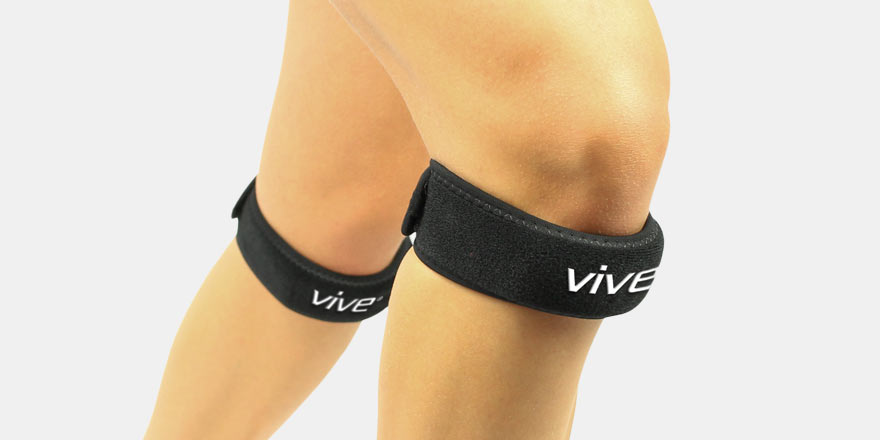 Knee straps are one of the most comfortable solutions to patellar dislocation pain. (See Product )
Knee straps are one of the most comfortable solutions to patellar dislocation pain. (See Product )
Wraparounds
A great go-to knee brace for patellar dislocation is the wraparound brace, which provides more support than simple knee straps, with only a bit more bulk. To maximize comfort, check the brace’s material. Breathable neoprene is usually a good bet.
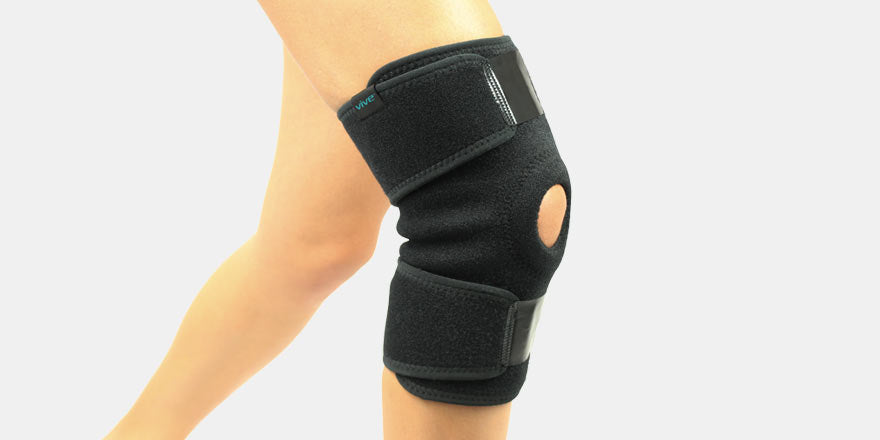 Wraparound knee braces provide a great blend of support, comfort, and practical pain relief. (See Product )
Wraparound knee braces provide a great blend of support, comfort, and practical pain relief. (See Product )
Similar to a wraparound, a hinged knee brace provides even more support for serious injuries.
Compression Wrap
The most lightweight option of all, compression wraps are good if you aren’t expecting any major physical activity in the near future. Compression wraps encourage healing by reducing swelling and improving circulation. Keeping pressure on the injury will keep the patella in place and speed recovery.
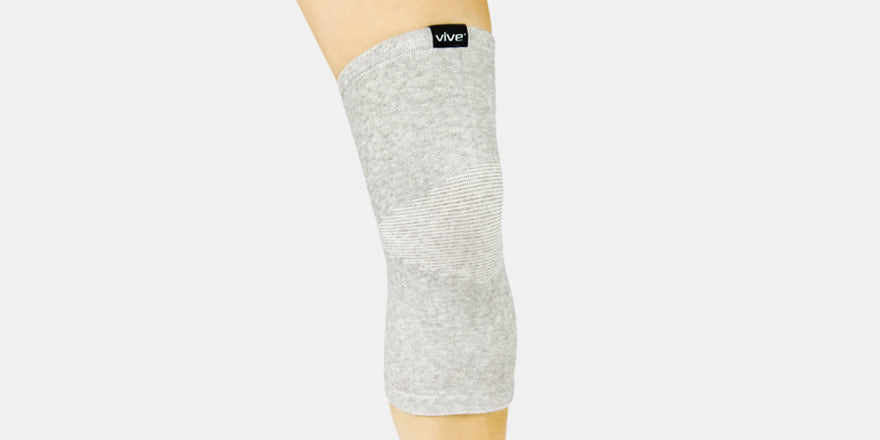 Compression reduces swelling and improves blood circulation to drastically reduce the symptoms of a patellar dislocation. (See Product )
Compression reduces swelling and improves blood circulation to drastically reduce the symptoms of a patellar dislocation. (See Product )
Knee Sleeve
A sleeve is a type of patellar dislocation knee brace that works by redistributing weight to different areas of the leg, allowing the affected joint to heal more easily. Knee sleeves are good to consider for those who want to stay active during recovery.
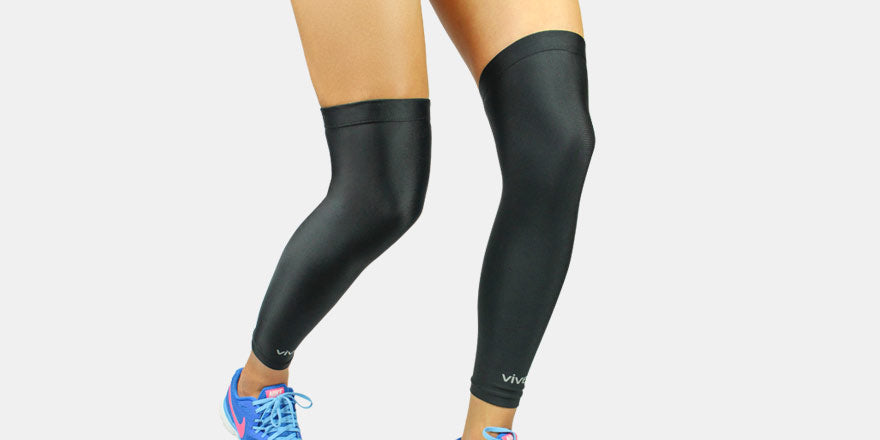 Knee sleeves that extend above and below the patella provide even greater pain relief. (See Product )
Knee sleeves that extend above and below the patella provide even greater pain relief. (See Product )
Patellar Dislocation Reduction
Your doctor will let you know whether your dislocated knee can be healed through at-home care or needs to be treated through a specialized medical procedure. A patellar dislocation reduction is a simple and effective process that can be completed in a matter of seconds.
During the procedure, your doctor will stand on the outer side of the knee and brace your leg with their hand. They will then bend the lower leg forward, snapping the joint back into place.
Patellar Dislocation Surgery
Surgery is considered in cases of recurrent patellar dislocation, to mitigate the threat of unexpected knee injury. There are a number of different surgical options available, and the goal of all of them is to find the most effective way to stabilize the joint, whether through tightening the tissue surrounding the bone, reconstructing key ligaments, or repositioning certain bones.
Products that Help Reduce Patellar Dislocation
Patellar Dislocation Recovery Time
As noted above, they key to a speedy patellar dislocation recovery is identifying the proper treatments and allowing them to work together for long-term health. Acute dislocations can disappear with a quick repositioning, and they have virtually no recovery time, while more serious dislocations will require up to three weeks.
Patellar dislocation surgery recovery time is determined by the specific procedure in question. The longest recovery times come from bone realignment procedures, which can leave the patient suffering from pain and stiffness for several months. With surgery especially, patellar dislocation rehab exercises are necessary for a healthy recovery.
Even after recovery, you’ll likely want to wear a knee brace while exercising to prevent re-injury. Talk to your doctor about the best ways to maintain long-term joint health.
Moving Forward After a Patellar Dislocation
If you are experiencing a first-time patellar dislocation, explore all the available treatment options to ensure a controlled recovery. The first incidence of dislocation is the best prediction of future injury. Those who have experienced dislocations previously may benefit from a conversation with their doctor.
In either case, a dislocated kneecap can be a difficult condition to manage, due to it’s come-and-go nature and the very real threat of more serious complications. However with a wide assortment of at-home treatments at your fingertips, a healthy recovery process is more than possible.
Sources:
https://www.drugs.com/cg/patellar-dislocation.html
https://www.stoneclinic.com/patelladislocation
https://emedicine.medscape.com/article/109263-overview
https://radsource.us/transient-lateral-patellar-dislocation/







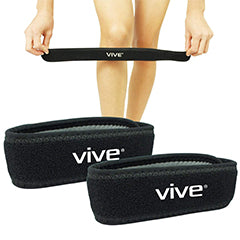
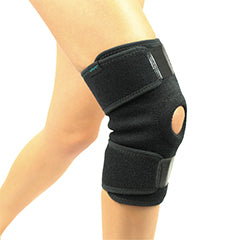
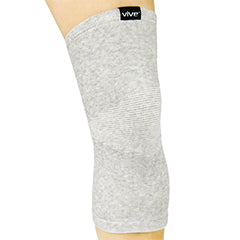
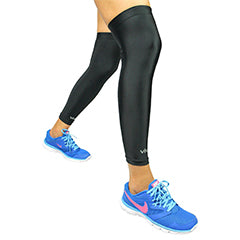
Leave a comment